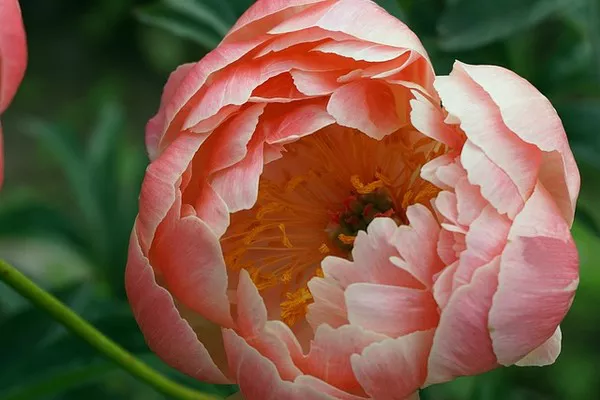Peonies, with their lush blooms and captivating fragrance, are a beloved addition to gardens around the world. As spring transitions into summer, the vibrant peony flowers eventually fade, signaling the need for post-flowering care. While the peak bloom period may be over, proper attention during this phase ensures the health and vigor of your peony plants for seasons to come. In this comprehensive guide, we will explore the essential steps to take once your peonies finish flowering, enabling you to maximize their longevity and beauty.
Deadheading for Aesthetic Appeal:
One of the first tasks after peonies finish flowering is deadheading, the removal of spent blooms. This not only enhances the overall appearance of the plant but also redirects energy from seed production back into the roots. To deadhead peonies, use clean, sharp pruning shears and snip the faded flowers just below the base. Be cautious not to cut any emerging buds or healthy foliage in the process.
Pruning for Health and Structure:
Proper pruning is crucial to maintain the health and structural integrity of your peony plants. Once the blooms have faded, take the opportunity to assess the overall shape of the plant. Remove any damaged or diseased stems by cutting them back to the base. Additionally, prune any excessively tall stems to encourage a more balanced and compact growth habit. Remember to sterilize your pruning tools between cuts to prevent the spread of diseases.
Supporting Heavy Blooms:
Peonies are known for their large, heavy blooms, which can sometimes cause the stems to bend or break under their weight. To prevent this, consider providing support for your peonies. Use discreet stakes or hoops to gently cradle the stems, securing them in place without compromising the natural beauty of the plant. Installing supports early in the growing season can also help prevent damage before it occurs.
Fertilizing for Future Growth:
As your peonies transition from flowering to a period of vegetative growth, they will benefit from a balanced fertilizer application. Choose a fertilizer with a relatively equal ratio of nitrogen, phosphorus, and potassium. Apply the fertilizer around the base of the plant, taking care not to let it come into direct contact with the stems or foliage. Water the area thoroughly after fertilizing to help the nutrients penetrate the soil.
Watering Wisely:
Proper watering is crucial in the post-flowering phase to support healthy root development. While peonies are generally drought-tolerant, consistent moisture is essential, especially during dry spells. Water deeply and infrequently, ensuring the soil remains consistently moist but not waterlogged. Avoid overhead watering, as wet foliage can invite fungal diseases. Mulching around the base of the plants helps retain moisture and suppress weeds.
Division for Renewed Vigor:
Peonies benefit from division every few years to maintain their vigor and promote optimal blooming. The ideal time for division is in the fall, but post-flowering is also a suitable period. To divide peonies, carefully dig up the entire plant, preserving as much of the root system as possible. Use a sharp knife or garden spade to separate the clump into smaller sections, each containing both roots and shoots. Replant the divisions at the same depth as the original plant, ensuring they receive adequate water as they establish themselves.
Disease and Pest Management:
Vigilance against diseases and pests is crucial throughout the growing season, including after flowering. Keep an eye out for common issues such as powdery mildew, botrytis blight, and aphids. If any signs of disease or infestation are observed, promptly take action. Use appropriate fungicides or insecticidal soaps as needed, following product instructions carefully. Regularly inspecting your peonies allows for early detection and intervention, preserving the health of the plants.
Preparing for Winter:
As fall approaches, it’s essential to prepare your peonies for winter dormancy. Mulch around the base of the plants with a layer of organic material, such as straw or shredded leaves, to insulate the soil and protect the roots from extreme temperatures. Cutting back the foliage to a few inches above ground level helps prevent the development of fungal diseases during winter. Take care not to remove the entire stem, as some residual structure can provide additional protection.
Conclusion:
While the vibrant display of peony blooms may be fleeting, the care you provide after flowering plays a pivotal role in ensuring the longevity and vitality of your plants. From deadheading and pruning to fertilizing and disease management, each step contributes to the overall health and resilience of your peonies. By investing time and attention in post-flowering care, you’ll be rewarded with a flourishing peony garden year after year, celebrating the enduring beauty of these enchanting perennial plants.


